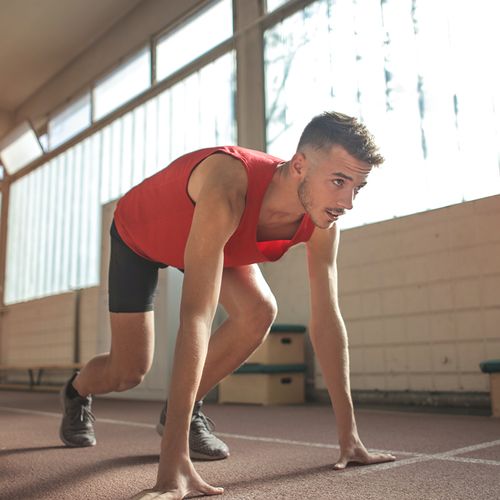Exercise machines can provide excellent workouts. But unfortunately, a woman may wind up with injuries if she uses a machine improperly-or if the machine is not suitable for a person her size.
Benefits: Cardiovascular exercise helps you control or lose weight...reduces blood pressure and cholesterol...and boosts energy and mood."
Do a cardio workout for 30 minutes or more at least three times a week. Begin with a five-minute warm-up, working up to your target speed...and end with a five-minute cooldown, gradually slowing your pace. For the 20 minutes in between, work hard enough to give your heart a workout, but not so hard that you risk overtaxing it.
To gauge effort: If you can talk normally, work harder...if you barely have the breath to get a word out, ease up. Interval workouts-alternating every few minutes between bursts of intense activity and periods of lighter activity-burn more calories than a single sustained pace.
*Check with your doctor before beginning any exercise program, especially if you are pregnant, are new to exercise, have recently recovered from an injury or have a chronic disease.
Recommended: Treadmill.
You walk or run on a flat or inclined surface as the treadmill records your time, mileage, heart rate and/or calories burned. A preset program can automatically generate varying speeds and inclines.
Especially beneficial for: Women with or at risk for osteoporosis (brittle bone disease). Walking is a weight-bearing exercise that increases bone density...and the treadmill's shock-absorbing platform is easier on joints than pavement.
To use: Start by setting the speed at two miles per hour, then slowly increase your pace. Move naturally, keeping your head up and staying in the center of the belt.
Safety alert: Holding the handrails while walking rapidly or running forces your body into an unnatural posture, increasing the risk for muscle strain-so once you have your balance, let go. Use a safety key with a cord that clips to your clothing and connects to the emergency "off" switch so that the treadmill belt will immediately stop moving if you fall.
Recommended: Stationary bicycle.
An upright bike looks and feels like a regular road bike. With a recumbent bike, the rider sits on a wide saddle, leaning against a backrest, legs out in front. Both types give an equally good cardio workout.
Especially beneficial for: Women with balance problems, because there is no risk of falling and overweight women, because it supports the body and allows adjustable levels of external resistance rather than working against the user's own body weight. A recumbent bike is most comfortable for people with back problems or limited mobility.
To use: Every few minutes, alternate "sprints" of fast, low-resistance pedaling..."climbs" of slow, high-resistance pedaling and recovery intervals of moderately paced, medium-resistance pedaling. To work shin muscles, use pedal straps or toe clips so that you can pull up as well as push down while pedaling.
Safety alert: Improper seat height can lead to knee injuries. When one pedal is pushed all the way down, your knee should be slightly bent-never fully extended. If the seat adjusts forward and aft, position it so that knees align with your ankles rather than extending beyond your toes. If you have narrow hips and the distance between the pedals seems too wide, see if a different brand of bike feels more comfortable. To reduce back and shoulder strain on an upright bike, raise the handlebars.
Use with caution: Stair stepper
This machine provides a challenging workout because you work against your own body weight and your center of gravity moves up and down with every step.
Problem: Users may lean heavily on the handrails to keep their balance and to take weight off the legs. This increases the risk for injury to the wrists...and misaligns the spine, which can strain the back.
Solution: To avoid falls, keep only your fingertips on the rails, using a light touch...maintain a moderate pace that does not challenge your balance. Do not set the height of the rise too high (as if taking stairs two at a time)—the stepping motion should feel natural. For good posture, keep shoulders and hips aligned and imagine trying to touch the top of your head to the ceiling.
Note: The stair stepper may not be appropriate if you are overweight or new to exercise and feel discouraged by the difficulty of the workout...have problems with your joints...or have any trouble with balance.
Use with caution: Elliptical trainer.
This low-impact machine combines the leg motions of stair climbing with cross-country skiing to work the lower body. Some styles include movable arm poles, adding an upper-body component
Problem: For short-legged women, the elliptical can force a longer-than-normal stride that may strain the knees, hips and/or lower back.
Solution: The goal is to move smoothly with good posture. If your movement feels awkward or jerky, decrease the stride setting (try 16 inches). If this does not help, avoid the elliptical trainer.
